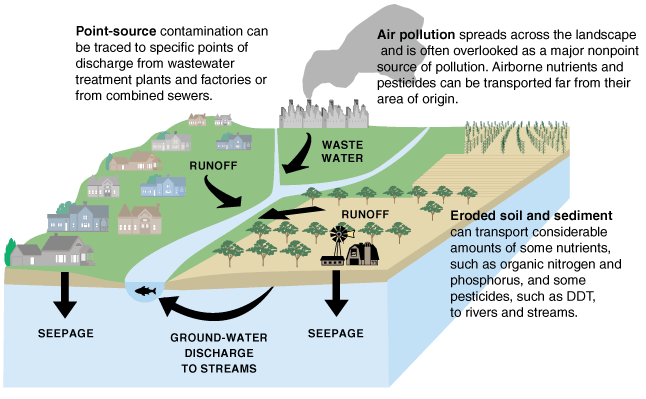The health of the Kansas River affects all of us. We depend on it for drinking water, for its role in our ecosystem, and for recreation. Therefore, protecting the river is the responsibility of our entire community. You can do your part to protect the river by not only reducing your own negative impact on its water quality, but also by reporting instances of pollution or other threats by contacting the Kansas Riverkeeper.
Water Quality
Water quality refers to the physical, chemical, and biological features of water. The description of the quality of water as “good” or “bad” depends on the purpose for which it is being used and is dependent on many different – but often interrelated – factors. Some of these include atmospheric conditions, landscape features, connections between surface water and ground water, human activity, and type and number of point source and non-point source polluters. Many of these factors are discussed in this section.
The state of Kansas is a major agricultural state and a leading producer of wheat, grain sorghum, corn, sunflowers and soybeans. Kansas is also home to almost 7 million beef and dairy cows, as well as other livestock. Because there are so many of these non-point source polluters, the major threats to Kansas streams are nutrients and bacteria (from fecal matter) and pesticides (from agricultural crops) that wash into streams from overland runoff during storms. Other threats come from point source polluters and include in-river sand and gravel dredging operations, wastewater treatment plant effluent, industrial facilities, runoff from landfills, and coal-fired power plants.
The diagram below (from USGS) illustrates just a few of the factors that can affect water quality.


 Paddle safely! Use the links below to quickly access information that impacts river conditions.
Paddle safely! Use the links below to quickly access information that impacts river conditions.
